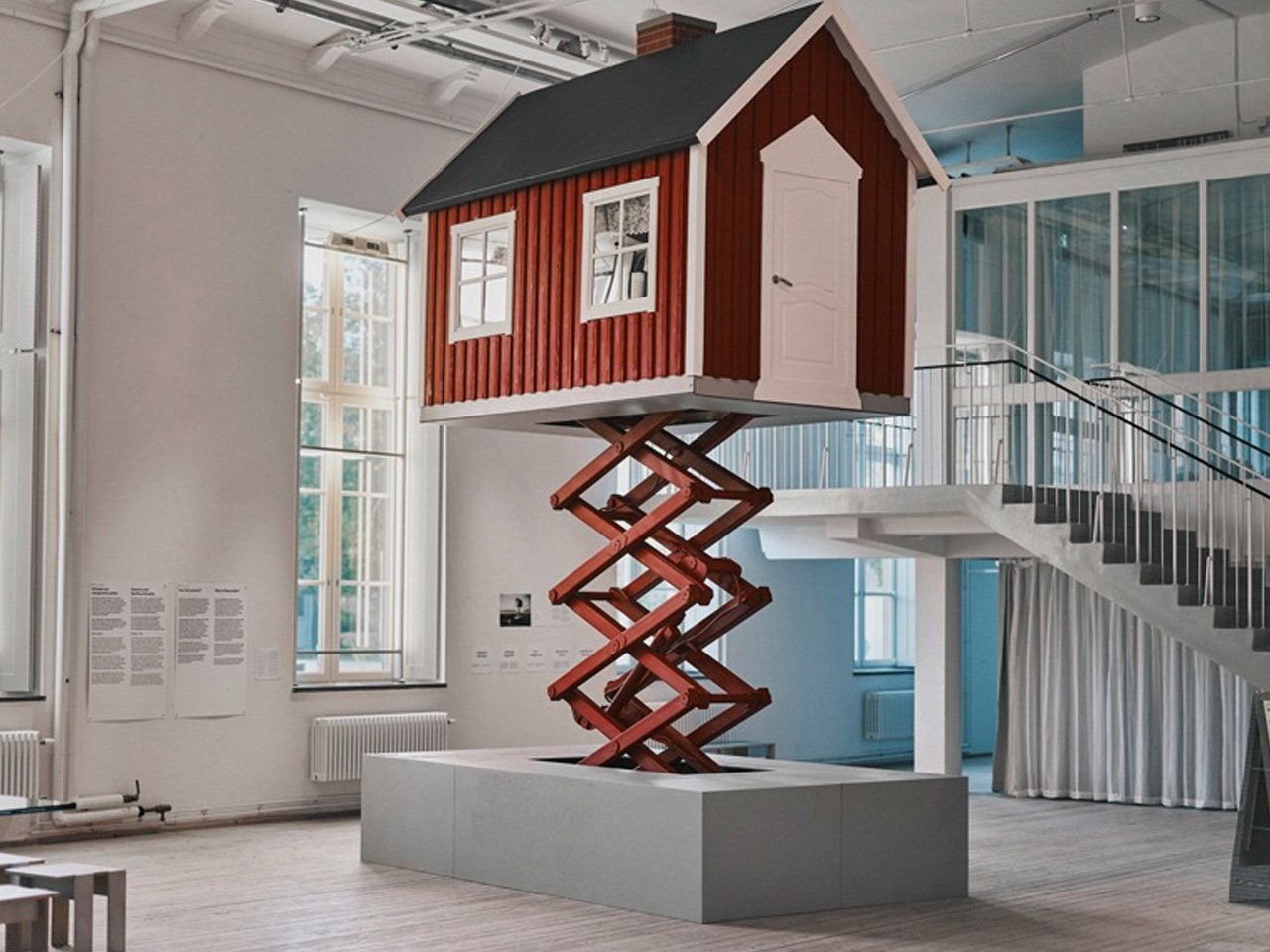In the face of unprecedented climate uncertainty, Swedish architect Ulf Mejergren has created a provocative response that literally elevates the conversation about adaptive housing. The Lift House, a compact red cottage perched atop a mobile scissor lift, stands as both a functional prototype and a conceptual manifesto for living in an era when the ground beneath our feet can no longer be trusted.
Currently on display at ArkDes – The Swedish Center for Architecture and Design in Stockholm as part of the “Beredd (Ready)” exhibition, the project emerged from urgent questions about emergency preparedness. “In an era of increasing downpours, record rainfall, and sudden weather shifts, the work explores what it means to live in a state of constant emergency,” explains Mejergren. “What do we choose to take with us? How do we live when the ground beneath us can no longer be trusted?”
Designer: Ulf Mejergren
Engineering Domesticity
The architectural solution is deceptively simple yet technically sophisticated. A traditional Swedish cottage, complete with gabled roof and wooden panel cladding, sits mounted on an industrial scissor lift painted in classic Swedish red. The marriage of vernacular domesticity with industrial mechanics creates a striking dialogue between comfort and functionality, between permanence and mobility.
Material efficiency drove every design decision. With the lift’s capacity limited to just 227 kilograms, each component required careful calculation to maintain structural balance and stability. The simplified chimney, fabricated from CNC-cut MDF, and the minimal interior furnishings all contribute to the project’s strategic lightness. Lace curtains flutter at the windows, introducing an almost surreal domesticity to what is essentially a piece of emergency equipment.
Climate Adaptation Strategy
Drawing on research from Linköping University, the project responds to three conventional approaches to climate risk: protection, adaptation, and retreat. Mejergren proposes a fourth strategy—temporary retreat—that offers flexibility when conventional solutions fail. The Lift House can rise above flood waters, relocate when necessary, and provide security through motion rather than static fortification.
The timing of the project reflects growing urgency around climate adaptation. As extreme weather events force more frequent evacuations and permanent displacement, architects worldwide are reconsidering fundamental assumptions about shelter and permanence. Mejergren’s approach sidesteps traditional debates about hardening infrastructure or planned retreat by proposing architecture that can literally rise to meet the challenge.
Cultural Impact and Future Vision
UMA, Mejergren’s Stockholm-based practice founded in 2010, describes itself as adventurous, combining “structure and rationality from architecture and playfulness and punk from art.” This philosophy permeates the Lift House, which operates simultaneously as serious climate research and architectural provocation. The project has garnered significant international attention, with recent features in DesignBoom and Good Good Good highlighting its relevance to global climate adaptation discussions.
Beyond its immediate exhibition context, the Lift House raises fundamental questions about the future of domestic architecture in an unstable world. While the current iteration isn’t intended as a livable dwelling, its conceptual framework challenges architects and policymakers to imagine new forms of resilience. In a world where permanent solutions may prove inadequate, Mejergren’s mobile refuge suggests that our homes, like our communities, may need to learn to dance with uncertainty rather than resist it. The Lift House remains on view at ArkDes through November 2, inviting visitors to contemplate a future where adaptability trumps permanence.
The post This Red Cottage Rises 20 Feet On A Scissor Lift When Floods Strike first appeared on Yanko Design.

